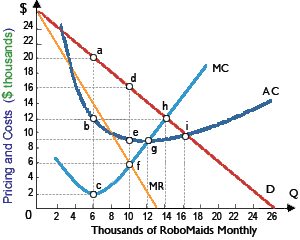When point e corresponds to $9,000 per RoboMaid, Robomatic can produce economic profit all month of at most around: (1) $25 million. (2) $40 million. (3) $55 million. (4) $70 million. (5) $85 million.

I need a good answer on the topic of Economics problems. Please give me your suggestion for the same by using above options.